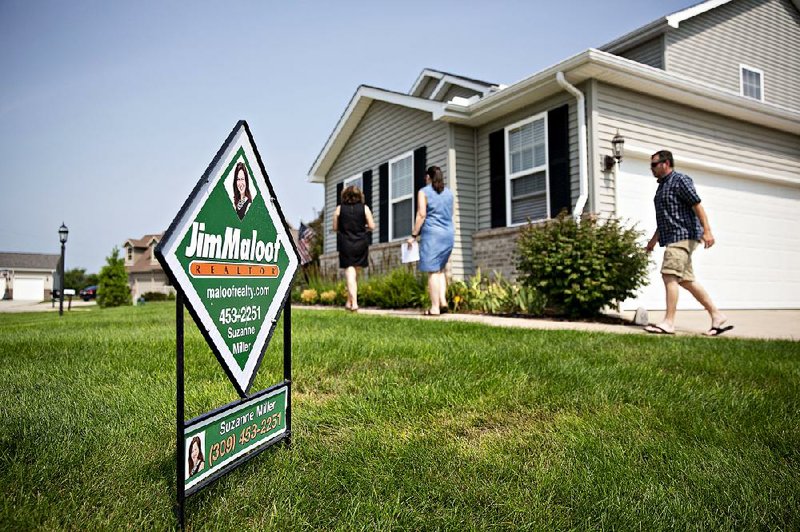Sales of previously owned U.S. homes fell to the weakest pace in more than three years in December, falling short of estimates and indicating the housing market remained in a slowdown as the year ended.
Contract closings decreased 6.4 percent from November to an annual rate of 4.99 million, the National Association of Realtors said Tuesday. The median sales price rose 2.9 percent from a year earlier, the least since February 2012, to $253,600, while inventory increased.
The latest results brought the 2018 tally to 5.34 million, the weakest pace since 2015. Analysts expect that economic growth last quarter got little help from the industry.
Declines in both single-family and condominium sales indicate the residential real estate industry was struggling to gain traction as elevated property values and a lack of affordable listings discouraged buyers, though more inventory has become available compared with past years.
While home-price growth is cooling, it's been outpacing gains in worker pay for several years. That's kept buying out of reach for many Americans, especially young people who are also saddled with student loans. Nonetheless, a tight labor market is underpinning demand.
"Affordability is more important than jobs," association chief economist Lawrence Yun said at a briefing in Washington, referring to the softer results despite a strong labor market.
Several consecutive months of rising inventory could lead to more-tepid price gains, Yun said in a statement, adding that lower mortgage rates also may revive sales in the spring. Borrowing costs are near the lowest since April, and loan applications have surged in recent weeks.
The association's report is likely to be more closely monitored than usual as the government shutdown has delayed the release of key official data in areas such as housing and residential construction. So far, a majority of Realtors are reporting little impact from the closure, Yun told reporters.
"Looking ahead to 2019, expect weaker existing-homes sales as the new year ushered in a government shutdown and worsening economic uncertainty," said Cheryl Young, a senior economist at Trulia.
Higher mortgage rates initially triggered a softening in sales around May and climbed through November when many of the contracts were finalized for December sales. But rates have stabilized in recent weeks amid concerns about the U.S. stock market and a deterioration in global economic growth.
Home purchases fell in all four regions, led by an 11.2 percent decline in the Midwest and a 6.8 percent drop in the Northeast.
Economists surveyed by Bloomberg had projected a 1.5 percent decline in sales to a 5.24 million pace.
At the current pace, it would take 3.7 months to sell all homes on the market, down from 3.9 months in November though higher than a year earlier; Realtors see less than five months of supply as a sign of a tight market.
Existing-home sales account for about 90 percent of U.S. housing and are calculated when a contract closes. New-home sales make up the remainder of the market and are seen as timelier because they're counted when contracts are signed. Those figures are currently being delayed, however, because of the shutdown.
Information for this article was contributed by Shobhana Chandra of Bloomberg News and by Josh Boak of The Associated Press.
Business on 01/23/2019
